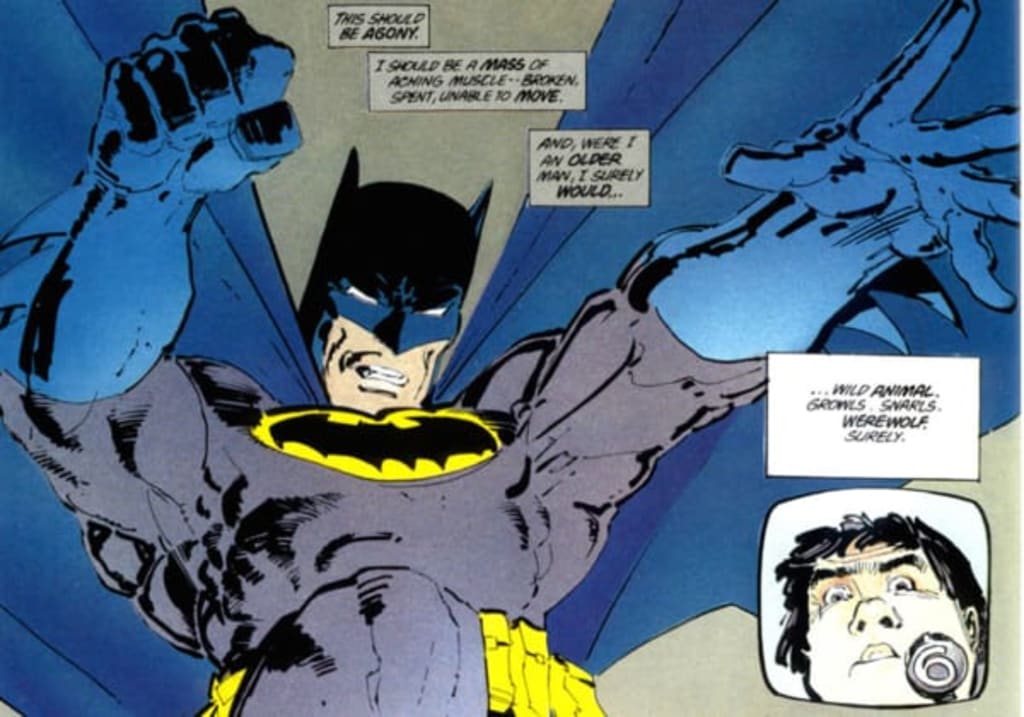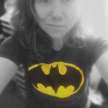Journalism and The Dark Knight Returns
Representation of the news in comics, and the subversion in Frank Miller's The Dark Knight Returns.

It may not instantly come to mind, but journalism runs deep through the worlds of superhero comics. Comics first superhero, Superman, lives his alter ego as Clark Kent, mild-mannered reporter for the Daily Planet. Superman’s love interest, the wonderful Lois Lane, famously states in the 1978s Superman: The Movie, that “a good reporter doesn’t get good stories, a good reporter makes them great.” Hop across to the Marvel universe, and you have the likes of Spider-Man (Peter Parker), The Green Goblin (Norman Osborne), Ben Urich, J. Jonah Jameson, and Silk (Cindy Moon), all have prominent ties to either The Daily Bugle, or Fact Channel News.
Both the Daily Planet, originally named the Daily Star until the 1940s radio show starring Bud Collyer, and the Daily Bugle, are mainstays of their respective universes. It’s hard to separate their existence from their respective characters. Each provides a central role in their lives. Clark Kent becomes a reporter for one of the biggest newspapers around, The Daily Planet, in order to stay up to date with the latest information around the world, and see when he is needed most. Peter Parker, as a teenager, worked freelance selling photos of his alter ego, Spider-Man, to the Daily Bugle for a little extra money to support himself and his Aunt May during high school and college. Cindy Moon, a fairly recent character to the Marvel Universe, taking on the role of Silk, joins Fast Channel News, under J. Jonah Jameson, the former editor in chief of The Daily Bugle, in order to learn more about the world, after being locked away for 13 years, and to help track down her family. Aside from instances such as Civil War, where the situation is used as commentary on real life events, such as the patriot act, news media is used as a means for our heroes to look upon the rest of the world, and examine it, if anything, it denotes how they stand apart from the rest, watching the rest of humanity from afar, and intervening when they see fit.
However, when it comes to Frank Miller’s The Dark Knight Returns, it’s interesting to see that the news media takes on a different position. Rather than giving the superhero a look at the world around him, the news media acts as the world commenting on Batman himself. The effect his return has, and how the world reacted to his initial disappearance. As Kofoes states in his paper, Breaking the Frame, “The media can only react to his presence, shaping the interpretation but not the form his actions take”. The news reports act more for us, then they do for Batman, we learn just how long Batman has been in retirement, the war in Corto Maltese, and the inactivity of Batman’s previous rogue gallery. Interestingly, It’s Superman that provides the most interesting commentary on how the news features in The Dark Knight Returns. Stating, "They were considering their options and you were probably still laughing when we came to terms. I gave them my obedience and my invisibility. They gave me a license and let me live. No I didn’t like it. But I get to save lives… and the media stays quiet. But now the storm is growing again—they hunt us down again—because of you”. It’s an interesting parallel for Superman to be the one to comment on the media hunting them down, the use of words, paints the news media as just as dangerous as the likes of The Mutants or The Joker. Even when the story puts complete focus on the news stories, when trying to compare the Pro-Batman side, with the Anti-Batman camp, the focus still paints Batman in a negative light.
Miller’s grim and gritty view of a future Batman echoes through multiple levels. But the stories primary method of world building, the news media, breaks away from how it is traditionally seen in mainstream comics. A feature previously used to help our heroes keep an eye on the world at large, becomes just as big a threat, if not greater, than The Joker himself.
Check out:
- Action Comics #1 (1938)
- The Adventures of Superman (1940 – 1951) Radio Show
- Amazing Fantasy #15 (1962)
- Fantastic Four # 2 (1962)
- Amazing Spider-Man # 1 (1963)
- Superman: The Movie (1978) Directed by Richard Donner
- Superman Vs. Muhammad Ali (1978)
- The Dark Knight Returns (1986)
- Batman: The Cult (1988)
- Marvels (1994)
- Spider-Man: Blue (2002)
- Civil War (2006 – 2007)
- Amazing Spider-Man #1 (2014)
- Amazing Spider-Man #4 (2014)
- Silk: The Life and Times of Cindy Moon (2015)
- Breaking the Frame (2009) by D. Kofoes
About the Creator
Mikayla J. Laird
Passionate life long film and comic fan. Firm believer in using entertainment to educate. Part-time lecturer.
https://www.facebook.com/MikaylaJLaird/






Comments
There are no comments for this story
Be the first to respond and start the conversation.